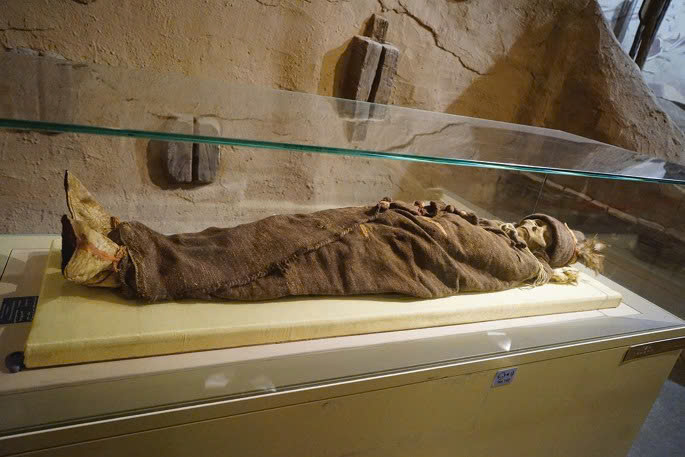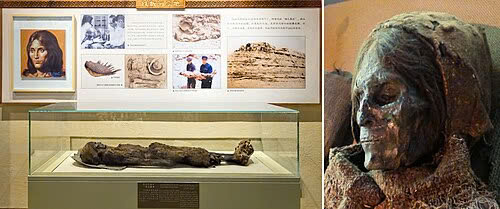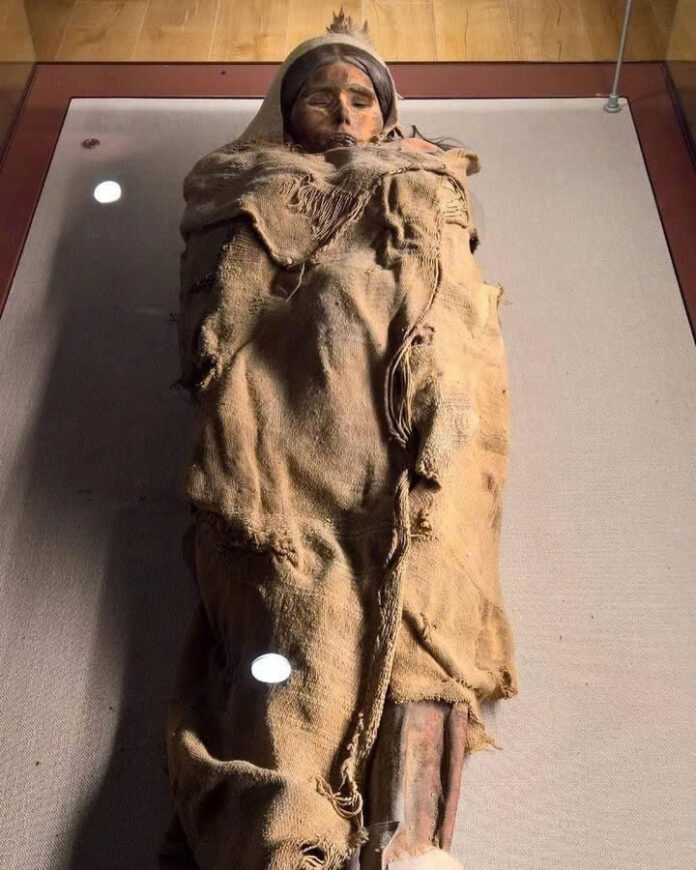In the heart of China’s unforgiving Xinjiang region, where sand and salt have reigned supreme for millennia, lies one of archaeology’s most captivating discoveries. Unearthed in 1980 from the parched Tarim Basin, the Beauty of Loulan has captivated researchers and history enthusiasts alike, offering a rare glimpse into a forgotten chapter of human migration and cultural exchange.
The Accidental Mummy: Nature’s Perfect Preservation

Unlike the carefully embalmed pharaohs of Egypt, Loulan’s journey to immortality was entirely accidental. Dating back approximately 4,000 years to the Bronze Age, her body was naturally mummified by the desert’s extraordinary combination of extreme aridity and mineral-rich soil. This unplanned conservation miracle preserved not just her skeletal remains, but also delicate features like eyelashes, facial contours, and strands of hair—allowing us to gaze upon a face that last drew breath four millennia ago.
What makes her preservation truly remarkable is how it occurred without human intervention, a testament to the unique environmental conditions of the Tarim Basin. The high salt content from nearby ancient lakes, combined with the region’s bone-dry climate, effectively desiccated her tissues before decomposition could begin—creating a time capsule of Bronze Age humanity.
A Genetic Puzzle: Rewriting Migration Histories
When scientists first conducted DNA analysis on Loulan and other Tarim mummies, the results challenged established historical narratives. Her genetic markers revealed significant European ancestry, suggesting her people had traveled from western regions—perhaps as far as Eastern Europe or Siberia—long before the formal establishment of Silk Road trade routes.

This discovery fundamentally altered our understanding of ancient migration patterns across Eurasia. It demonstrated that human movement across the continent began far earlier and was more extensive than previously believed, painting a picture of Bronze Age Eurasia as a dynamic landscape where diverse populations intermingled, exchanged ideas, and adapted to new environments.
Surviving the Impossible: Life in Bronze Age Tarim
How did Loulan’s community survive in one of Earth’s most inhospitable environments? The archaeological evidence surrounding her discovery points to remarkable human adaptability. Her people developed sophisticated techniques for harvesting scarce water resources, cultivated hardy crops that could withstand extreme conditions, and established early trade networks that would eventually evolve into the legendary Silk Road.
Their textiles—some of which survived alongside Loulan—demonstrate advanced weaving skills using local materials, while tools found nearby showcase innovative solutions to the challenges of desert living. These adaptations weren’t merely about survival but reflected a thriving culture that managed to flourish where modern humans would struggle to sustain themselves.
The Proto-Silk Road: Cultural Exchange Before History Recorded It
Though the Silk Road would only be formally established centuries after Loulan’s death, her very existence in this remote frontier suggests that the foundations for this legendary trade route were being laid during the Bronze Age. The genetic and cultural evidence surrounding the Tarim mummies indicates that the movement of people, goods, and ideas across Eurasia was already well underway by 2000 BCE.
Loulan’s community likely participated in early networks of exchange that connected distant cultures long before history recorded such interactions. Artifacts discovered near her burial site include materials from far-flung regions, hinting at trading connections that stretched across thousands of miles, linking East and West in ways scholars are only beginning to understand.
Video
The Silent Storyteller: What Loulan Continues to Teach Us
Today, as Loulan rests in climate-controlled museum conditions, her silent presence continues to educate and inspire. She reminds us that history extends far beyond the written record and that ordinary individuals from remote communities have played crucial roles in shaping our collective human story.

Her discovery challenges us to reconsider established historical narratives and to recognize that civilization’s developmental timeline is far more complex than once believed. The Beauty of Loulan serves as a powerful ambassador from the distant past, connecting us with ancestors whose lives, struggles, and achievements might otherwise have been lost to time.
Conclusion: Bridging Ancient and Modern Worlds
The Beauty of Loulan represents far more than an archaeological curiosity—she embodies the enduring human spirit of exploration, adaptation, and cultural exchange. Her story reveals that the interconnected world we know today has roots extending deep into prehistory, with people crossing vast distances and bridging diverse cultures long before formal trade routes were established.

As we continue to study Loulan and her contemporaries, we gain invaluable insights into our shared heritage as humans—a legacy of movement, resilience, and cultural exchange that transcends modern borders and identities. In her perfectly preserved features, we find a reflection not just of ancient Eurasia, but of the universal human drive to explore, connect, and endure against all odds.

